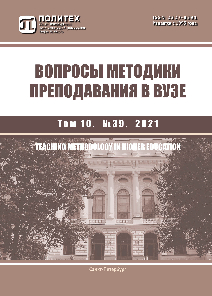Concept of a new generation foreign language tutorial: traditions and innovations
The article is a detailed review of the English tutorial “Science and Technology: Basic words and structures”. The existing trends in modern higher education are described, which must be taken into account when creating teaching aids in a foreign language. The most urgent requirement for a new generation textbook is the presence in it of computer linguodidactics elements, that is, tasks using digital resources for the use in classroom and students’ independent work. The textbook under review combines traditional, linguodidactic, and innovative digital aspects. In the first part of the English tutorial, which is an academic section containing texts on the history of science, the life of scientists, and text assignments, carefully designed exercises are given for the development and systematization of the general scientific vocabulary, assignments for the assimilation of Word Families, Confusables, Translator’s False Friends, etc. The most pronounced is the content visualization trend updated in the second part of the tutorial, which is illustrated by such task formats as an info poster, a mind map, an integrative video auditing task and a word cloud. The conclusion is made about the didactic benefits of such textbooks for teaching a foreign language in the modern paradigm, since the presented content visualization tools increase students' interest in a foreign language and stimulate their motivation. The tutorial can be used as the main or auxiliary educational material in teaching English to students of any specialty, which seems to be relevant in connection with the concept of lifelong education. The preparation of certain tasks of the tutorial by graduates of a linguistic profile is a good organizational and methodological approach to the creation of teaching aids in combination with the simultaneous training of future teachers of a foreign language.



